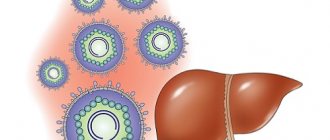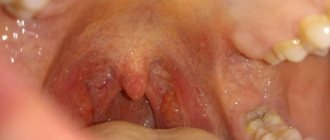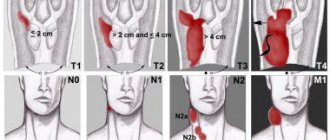The mechanism of the appearance of taste sensations
It is not always easy for even doctors to determine the cause of the taste in the mouth.
Special receptors, mostly located on the papillae of the tongue, are responsible for the sensation of taste in humans. A few receptors are located on the palate and back of the pharynx. All of them are sensitive to several dozen different tastes and their combinations.
Taste sensitivity, like an ear for music, is individual for each person; it can be developed and improved, achieving the ideal taste, like tasters or sommeliers. Despite individual differences, the sensation of the five basic tastes: salty, sweet, sour, bitter, and the taste of meat products is accessible to absolutely everyone.
When a product hits the taste buds, the sensations they receive travel through nerve fibers to the brain. A full sensation and perception of taste is impossible without its combination with smell.
When abnormal sensations such as a metallic taste appear, occurring suddenly, without any apparent connection or cause, it is necessary to find out the etiology of this symptom in order to correct your condition, especially if such sensations occur regularly.
Alarming symptoms
If you have a metallic taste in your mouth after coughing, you should not panic ahead of time. Only in the aggregate of a number of symptoms can one really become concerned and go to the doctor for further investigation.
You can go to the doctor at any time convenient for you in the following cases:
- You do not experience significant discomfort due to the taste and smell of iron appearing in your mouth. This symptom does not bother you.
- In the event that the oral cavity is visited by the smell of iron only from time to time, also without causing you significant inconvenience.
- If, apart from the unpleasant taste and smell, you do not feel any other symptoms.
Additional manifestations of the disease, such as headaches, weakness, apathy, loss of strength, drowsiness, inadequate skin color, digestive problems, and signs of intoxication, may be a reason for suspicion.
Maybe,
External factors causing a metallic taste in the mouth
These reasons may be associated both with the influence of external factors and with physiological changes in the body. For example, metal can be felt when drinking certain brands of mineral water enriched with iron ions. Iron can reach your taste buds through untreated tap water passing through worn and rusty pipes. The solution in this situation is to use a high-quality cleaning filter.
The use of aluminum pots and cast iron cauldrons and frying pans may cause a metallic taste to be added to the traditional taste of food, especially if sour foods were cooked in it. In this case, the metal of the kitchen utensil reacts with food acids, salts are formed, and this is what is felt by the one who tastes this food.
Metal crowns can also cause a metallic taste, especially if they were installed a long time ago. Acidic foods can react with the metal ions in your dentures, creating a faint but very unpleasant taste.
Physiological conditions as a cause of metallic taste
Piercing as a cause of metallic taste in the mouth
If you do not pay enough attention to oral hygiene, you can soon experience this unpleasant symptom. Tartar, bleeding gums, periodontitis, plaque on the teeth and tongue - all these problems affect the appearance of distorted taste sensations.
The use of high-quality toothpaste and mouth rinse, the use of dental floss, and timely sanitation of teeth and gums can eliminate this problem. Hormonal changes in a woman’s life are certainly reflected in changes in the chemical composition of certain environments in her body.
In particular, menopause, pregnancy, and lactation change some positions of the blood formula. This is why sometimes a metallic taste appears in the mouth of women, especially often during pregnancy. Working in hazardous industries, accidents involving exposure to chemical compounds, and unfavorable environmental conditions can cause poisoning, one of the symptoms of which is the taste of metal in the mouth. Mercury, zinc, lead, copper, and arsenic are especially dangerous in this regard.
If poisoning with these chemicals occurs, then the metallic taste is accompanied by symptoms such as:
- Intense thirst.
- Continuous headache.
- Confusion.
- Nausea and vomiting.
- Dizziness.
- Pain in the abdomen and muscles throughout the body.
Without seeking medical help, a person with similar symptoms of poisoning may die or become disabled. A condition that is not as dangerous, but still very unpleasant and also accompanied by a metallic taste in the mouth, can be anemia, or iron deficiency. You can find out about its presence by donating blood for hemoglobin. Anemia can manifest itself with the following symptoms:
- Loss of strength, drowsiness.
- Headaches and dizziness.
- Dry skin, hair, brittle nails.
- Pale skin.
- Cardiopalmus.
- Cracks, or “jams” in the corners of the lips.
- Dry mouth, taste disturbances.
Although there is not enough iron in the body in this condition, it is its taste that becomes a frequent companion to anemia. It can be caused by an unbalanced diet, an increased need for iron compounds during pregnancy and lactation, and rapid growth of children and adolescents.
In addition to iron deficiency, the same reasons can lead to hypovitaminosis - a lack of individual vitamins or their groups. And just as with anemia, the taste of metal in the mouth can be a companion to this condition. Hypovitaminosis may cause irritability, drowsiness or insomnia, and decreased physical and intellectual potential. Taking vitamin complexes and enriching your diet with healthy foods will solve this problem.
Causes
In most cases, after coughing, a taste of iron in the mouth may be felt due to pathologies. Which ones:
- Bronchial asthma. This pathology is chronic and belongs to the category of diseases of the respiratory system. It is characterized by a condition in which the lumen of the bronchi narrows. Additionally, there is a violation of the ratios of the overwhelming number of cellular elements, affecting the structure of the organ.
- Bronchiectasis, emphysema. Patients suffering from chronic diseases over a long period of time may experience unpleasant symptoms associated with a metallic taste in the mouth. If this symptom occurs after a cough, you should pay attention to this and be wary, as this is an alarming sign. These diseases are extremely dangerous and require immediate medical attention and appropriate treatment. Otherwise, they can be fatal. The reason is the difference in ventilation and diffuse lung function.
- Oncological diseases. When malignant tumors form, damage to the tissue structures of organs develops. These signs are also characteristic of benign formations. As a result, damage to the vascular tissues in the organ occurs. The result will be an unpleasant iron taste in the mouth, which makes itself felt after coughing.
- Sinusitis. The process of sputum discharge or a severe runny nose can cause a lot of discomfort. One of these is the taste of blood in the mouth with a metallic taste. These signs can appear against the background of sinusitis, sinusitis, ethmoiditis.
- Laryngitis and pharyngitis. Bloody and metallic taste can be a consequence of the development of inflammatory processes in the larynx or pharynx.
- Tuberculosis. The disease affects the lungs, causing a severe cough. The last stages of the disease can cause coughing with a taste of blood and metal, since the discharge contains blood impurities.
All of these diseases are classified as pulmonary pathologies. They can cause these unpleasant symptoms and a number of other symptoms.
- Cough with a taste of blood: causes and treatment methods
But not in all cases, the metallic taste that manifests itself after a cough can appear due to diseases of the respiratory system.
There are a number of other reasons:
- Use of antibiotics, antidepressants, antihypertensive drugs and drugs for diabetes.
- During diagnostics using tomography or x-rays, a special contrast agent is used. Incomplete removal from the body can cause characteristic unpleasant symptoms.
- Particles of metal dust can penetrate into the respiratory tract and mouth area, which can cause this symptom.
- Intoxication of the body due to the influence of heavy metals.
- Diseases associated with the pancreas, various manifestations of food allergies.
- Vitamin deficiency with a deficiency of B vitamins, anemia, lack or imbalance of elements in the blood.
To identify the exact causes of these disorders, immediately seek help from a doctor.
An experienced specialist will study the patient’s clinical picture in detail, refer him for detailed diagnostic studies using instrumental diagnostics, and clinical laboratory tests.
Metallic taste is a symptom of disease
A metallic taste in the mouth is a reason to see a doctor.
Diseases of the gastrointestinal tract, in addition to specific symptoms at the location of the pathology, are often accompanied by the appearance of various tastes in the mouth, and a metallic taste is no exception. Most often it accompanies the following diseases:
Iron taste in the mouth: what does it mean?
The taste of iron when coughing is not always a sign of a disease of the respiratory system. Most people associate the taste of metal in the mouth with blood. This is the case: the primary cause of this symptom is anemia with a lack of vitamin B12 or folic acid.
In the throat you can feel the taste of iron in diseases of the gastrointestinal tract, pancreas, especially if it is accompanied by a sour aftertaste.
The appearance of an iron taste in the mouth can occur during pregnancy if there is a lack of B vitamins due to refusal of food of animal origin.
Recommended reading: Blood in saliva without coughing.
Side effects of medications that affect the appearance of foreign taste
A metallic taste in the mouth may occur while taking medications.
When using a number of medications, a metallic taste may accompany their use, being a side effect of the medications. These are the following groups of drugs:
- Medicines to lower cholesterol levels.
- Medicines used to treat gout.
- Antidiabetic drugs.
- Medicines for the treatment of asthma.
- Antidiabetic drugs.
- Antibiotics.
- Corticosteroids.
- Antihistamines.
- Antifungal drugs.
- Antihistamines.
- Medicines to regulate blood pressure.
In most cases, this taste will cease to be felt with the end of drug therapy, however, this side effect of the drug should be reported to the attending physician.
What measures should be taken
To find out the cause, the doctor will prescribe a diagnosis.
Diagnostics
A diagnosis can only be made after a detailed examination. In this case, it becomes clear which diagnostic measures will be used only after an anamnesis has been collected and the patient has been examined.
The most commonly ordered test in this situation is a blood test. The laboratory specialist will need blood from a finger. Using it, employees of a medical organization will determine the level of hemoglobin in the blood, the number of platelets, erythrocytes and leukocytes. Based on this information, we can conclude about the presence or absence of a viral disease or inflammatory processes in the body.
See also
Types and causes of cough with sputum, diagnosis and treatment methods
Read
If a general finger blood test reveals pathologies, then an additional biochemical test will certainly be needed. It will reveal chemical indicators of the blood, including how transport proteins move, whether there is enough iron in the blood, and whether the necessary compounds are present. Biochemistry is not always prescribed; it is usually required if serious pathologies are suspected.
If diseases of the respiratory system, including the lungs, are suspected, an x-ray will be prescribed. With its help, you can determine existing dark spots on organs, and with the help of other methods, identify their nature, degree of danger, and the like.
Magnetic resonance or computer tomography is prescribed if previous studies have not revealed a clearly defined pathology. These studies are not always cheap, so ordinary public clinics try to do without them.
If diseases of the respiratory system are excluded, then it is possible that there are problems in the digestive system. The doctor orders an examination of the esophagus or stomach.
An endoscopic tube is used. Ultrasound examination is usually not necessary.
Sometimes the occurrence of a metallic taste in the mouth is associated with a bacterial infection that has settled in the oral cavity or has moved lower into the respiratory system. If this is suspected, then a special culture is taken to identify the causative agent of this infection.
Naturally, in each specific clinical case there will be different diagnostic methods. They are determined depending on the typology of the disease. It is possible that several problems will be identified, but this is extremely rare.
Treatment
Treatment depends entirely on the existing problem, since it is first eliminated, and then the taste will go away on its own. If the problem is anemia, then they try to compensate for the lack of iron, red blood cells and hemoglobin in the body. Not only medications, but also proper nutrition are suitable for this.
A metallic taste caused by poisoning with metal salts indicates a serious danger. It is necessary to immediately intoxicate the body, otherwise there is a risk of death.
For bronchitis, pneumonia, oncology and other diseases, it is important to first start treating them or at least select those groups of drugs that will stop the main symptoms of the disease. They are dealt with only by a physician after conducting a detailed diagnosis and collecting an anamnesis.
How to get rid of the problem
If the cause of this is not a symptom of a disease, or a change in physiological state, you can try to eliminate the problem by rinsing with a salt solution (a teaspoon per half liter of water), drinking fruit and vegetable juices. You can chew propolis, ginger root, fresh mint leaves, and add dried spices to drinks.
Brushing your teeth after every meal, using rinses, dental floss for additional cleaning of interdental spaces, brushing your tongue with a special brush - all these measures will help get rid of the unpleasant taste in your mouth. Timely installation and replacement of dentures and dental sanitation can solve the problem.
Hypersensitivity cough: pathophysiology, differential diagnosis, treatment. Chapter 6
Currently, to explain the mechanisms of development of chronic cough, the concept of hypersensitive cough syndrome (HSCS) has been proposed, and chronic cough in patients with asthma, GERD, and rhinosinusitis is recommended to be considered as clinical phenotypes of HSCS. It is indicated that GCHS often starts after an upper respiratory tract infection. In 2014, an expert report (44 experts from 14 countries) of the European Respiratory Society was published, in which HCHS is proposed to be called . ”
Rice. 1. Possible causes and pathophysiological mechanisms of HPC.
Confirmation of the increased sensory sensitivity of the respiratory tract receptor apparatus is a change in the threshold of the cough reflex, an increased cough reaction in response to inhalation of capsaicin, citric acid or other irritants. With increased sensitivity of sensory receptors, even minimal stimulation causes a cough.
Rice. 2. Comparison of the cough response to different levels of stimulus in normal conditions and during hyperventilation.
The following clinical characteristics of hypersensitive cough syndrome have been established:
- Irritation in the throat or upper chest: laryngeal/pharyngeal parasthesia.
- Cough caused by non-cough stimuli, such as speech, laughter: allotussia.
- Increased cough sensitivity to inhalation stimuli and an increase in the number of triggers: hypertussia.
- Paroxysmal, difficult to control cough.
- Triggers:
- mechanical activation: singing, speaking, laughing, deep breaths;
- temperature stimuli: changes in air temperature and cold air;
- chemical stimuli: aerosols, aromas, odors;
- supine position;
- eating;
- physical exercise.
Cough hypersensitivity syndrome
Rice. 3. Scheme of development of GCKS. The proposed effect of vagus nerve damage occurs due to inflammation caused by exposure of the airways to infectious, physical, chemical and allergic irritants. The blue oval indicates the pathology (neuropathy) of hypersensitive cough syndrome.
Chung KF, McGarvey L, Mazzone S: Chronic cough as a neuropathic disorder. Lancet Respir Med 1:414–422.
In order to optimize the diagnosis of hCHS in England, a specialized questionnaire (Hull Cough Hypersensitivity Questionnaire) was developed, which includes 14 items with characteristic questions that are rated on a 5-point scale. Normally, the score ranges from 4 to 13. At higher values, there is a greater likelihood of HFCS. Unfortunately, this questionnaire has not been validated in Russia.
Please indicate how the following problems affected you over the past month, where 0 - did not affect you 5 - seriously affected you
| Hoarseness of voice | 0 | 1 | 2 | 3 | 4 | 5 |
| The need to cough to “clear” the throat | 0 | 1 | 2 | 3 | 4 | 5 |
| Sensation of congestion in the back of the throat | 0 | 1 | 2 | 3 | 4 | 5 |
| Regurgitation or vomiting when coughing | 0 | 1 | 2 | 3 | 4 | 5 |
| Cough when bending forward | 0 | 1 | 2 | 3 | 4 | 5 |
| Feeling of chest congestion and wheezing when coughing | 0 | 1 | 2 | 3 | 3 | 5 |
| Heartburn, dyspepsia (if you take medication for this, rate it 5) | 0 | 1 | 2 | 3 | 4 | 5 |
| Tickling and feeling of a lump in the throat | 0 | 1 | 2 | 3 | 4 | 5 |
| Cough while eating (during or immediately after eating) | 0 | 1 | 2 | 3 | 4 | 5 |
| Cough when eating certain foods | 0 | 1 | 2 | 3 | 4 | 5 |
| Cough when you get out of bed in the morning | 0 | 1 | 2 | 3 | 4 | 5 |
| Cough caused by singing or talking (such as on the phone) | 0 | 1 | 2 | 3 | 4 | 5 |
| Cough more during wakefulness rather than sleep | 0 | 1 | 2 | 3 | 4 | 5 |
| Strange taste in mouth | 0 | 1 | 2 | 3 | 4 | 5 |
Total score___________ /70
Table 1. Hull Cough Hypersensitivity Questionnaire to assess the severity of HCH.
Bronchial asthma.
Bronchial asthma (BA), including the “classic” version with wheezing and shortness of breath, or the cough variant of bronchial asthma, where cough is the only or predominant symptom, are the second most common cause of chronic cough after the previously described upper respiratory tract cough syndrome.
Cough as a symptom is considered one of the diagnostic criteria for asthma. However, the clinical importance of correct interpretation of cough syndrome in patients with asthma is underestimated. The prevalence of prolonged, morning and productive cough is thought to increase in individuals with poor asthma control. It has been suggested that cough frequency may be used as a surrogate marker of asthma control, with asthma patients having significantly higher cough rates than those "partially controlled" or "controlled". Cough with a controlled course of asthma does not significantly bother the patient.
| 1. | Cough for at least 8 weeks without wheezing. Absence of wheezing on auscultation of the chest |
| 2. | No history of asthma symptoms such as wheezing or shortness of breath |
| 3. | No history of upper respiratory tract infection within the previous 8 weeks |
| 4. | Airway hyperresponsiveness† |
| 5. | Effective response to bronchodilator therapy‡ |
| 6. | No increase in cough sensitivity § |
| 7. | No changes on the x-ray |
Table 2. Diagnostic criteria for the cough variant of bronchial asthma. All criteria must be met.
†Reference values for airway hyperresponsiveness: Dmin <12.5 units, PC20-FEV1 <10 mg/dL with methacholine. ‡ Assess response to bronchodilation therapy using oral or inhaled β2-agonists. Use of an objective measure (eg, VAS, symptom rating scale) is preferred. § Cough sensitivity does not increase according to some reports and decreases after treatment according to other reports, but does not increase in the purely cough variant of bronchial asthma. The issue of cough sensitivity is currently under consideration.
| 1. | Cough for at least 8 weeks without wheezing. Absence of wheezing on auscultation of the chest |
| 2. | Effective response to bronchodilation therapy |
Table 3. Simplified diagnostic criteria for the cough variant of bronchial asthma. All criteria must be met.
Eosinophilia in sputum and peripheral blood and increased reactivity of the respiratory tract can serve as supporting data for diagnosing the cough variant of bronchial asthma.
Currently, along with the cough variant of bronchial asthma, the current causes of chronic cough include non-asthmatic eosinophilic bronchitis, and atopic cough is also distinguished. A comparison of the symptoms characteristic of these diseases is given in Table. 4.
| Asthma | Cough variant of asthma | Atopic cough | Eosinophilic bronchitis | |
| Symptoms | Cough, shortness of breath, wheezing | Just a cough | Just a cough | Cough and phlegm |
| Atopy | Often | Often | Often | As in the population |
| Variable bronchial obstruction | + | ± | — | — |
| Bronischial hyperreactivity | + | + | — | — |
| Hyperreactivity to capsaicin | ± | ± | — | + |
| Effectiveness of bronchodilators | + | + | — | — |
| Efficiency of GKS | + | + | + | + |
| Response to H1 antagonists | ± | ± | — | — |
| Progression to asthma | not applicable | 30% | rarely | 10% |
| Sputum eosinophilia (>3%) | Often | Often | Often | Always |
| Submucosal eosinophilia | ↑ | ↑ | ↑ | ↑ |
| Eosinophilia in bronchoalveolar lavage | ↑ | ↑ | ↓ | ↑ |
| Infiltration of SMCs by mast cells | ↑ | ↓ | unknown | ↓ |
| Thickening of the basement membrane | ↑ | ↑ | unknown | ↑ |
Table 4. Symptoms of cough caused by eosinophilic respiratory diseases.
SMCs are smooth muscle cells of the respiratory tract. + = often ± = periodically — = absent
The following factors may indicate atopic predisposition:
- current or past allergic reactions, except bronchial asthma;
- eosinophilia in peripheral blood;
- increase in total IgE in blood serum;
- positive specific IgE result;
- positive result of an intradermal allergen test.
Supporting data:
- the presence of eosinophils in tracheobronchial biopsy samples;
- absence of eosinophils in BAL fluid;
- cough relief when taking H1-histamine blockers and/or steroids.
| 1. | Dry cough for at least 8 weeks without wheezing or shortness of breath |
| 2. | One or more factors indicating atopic predisposition† or the presence of eosinophilia in induced sputum |
| 3. | Irreversibility of bronchial obstruction (increase in FEV1 by less than 10% with an adequate dose of bronchodilator) |
| 4. | Normal airway reactivity |
| 5. | Increased cough sensitivity |
| 6. | Lack of response to bronchodilator therapy |
| 7. | No changes on the x-ray |
| 8. | Normal pulmonary function |
Table 5. Diagnostic criteria for atopic cough. All criteria must be met.
| 1. | Dry cough for at least 3 weeks without wheezing or shortness of breath |
| 2. | Lack of response to bronchodilator therapy |
| 3. | One or more factors indicating atopic predisposition† or the presence of eosinophilia in induced sputum |
| 4. | Cough relief with H1-blockers and/or steroids |
Table 6. Simplified diagnostic criteria for atopic cough. All criteria must be met.
Cough in patients with “classical” asthma is controlled in accordance with current clinical guidelines, the use of inhaled corticosteroids or combination drugs. For eosinophilic bronchitis, the use of ICS for 2-4 weeks, leukotriene receptor antagonists, is recommended.
| 1. | Chronic cough in patients without symptoms or objective evidence of variable obstruction |
| 2. | Normal airway hypersensitivity (provocation test with methacholine leads to a decrease in forced expiratory volume (FEV1) by 20% in 1 minute, PC 20 more than 16 mg/ml). |
| 3. | Sputum eosinophilia (acceptable upper cut-off level of more than 3% non-squamous sputum eosinophils). † |
†Beyond the 90th percentile for general patients (1.1%).
Table 7. Diagnostic criteria for non-asthmatic eosinophilic bronchitis. All criteria must be met.











